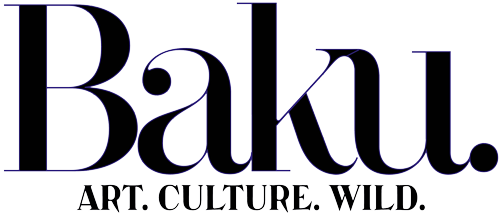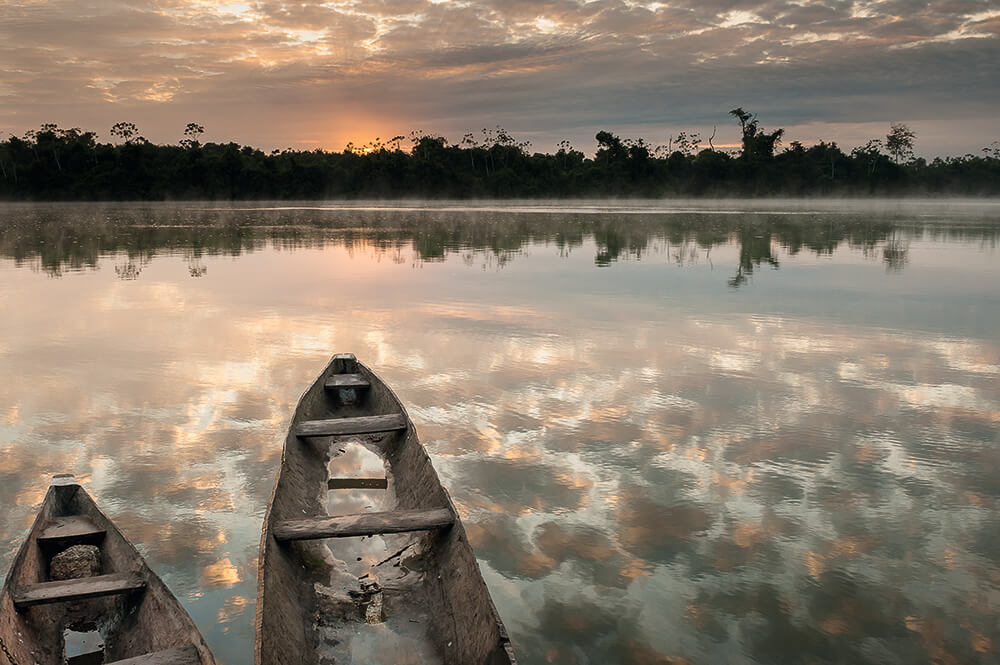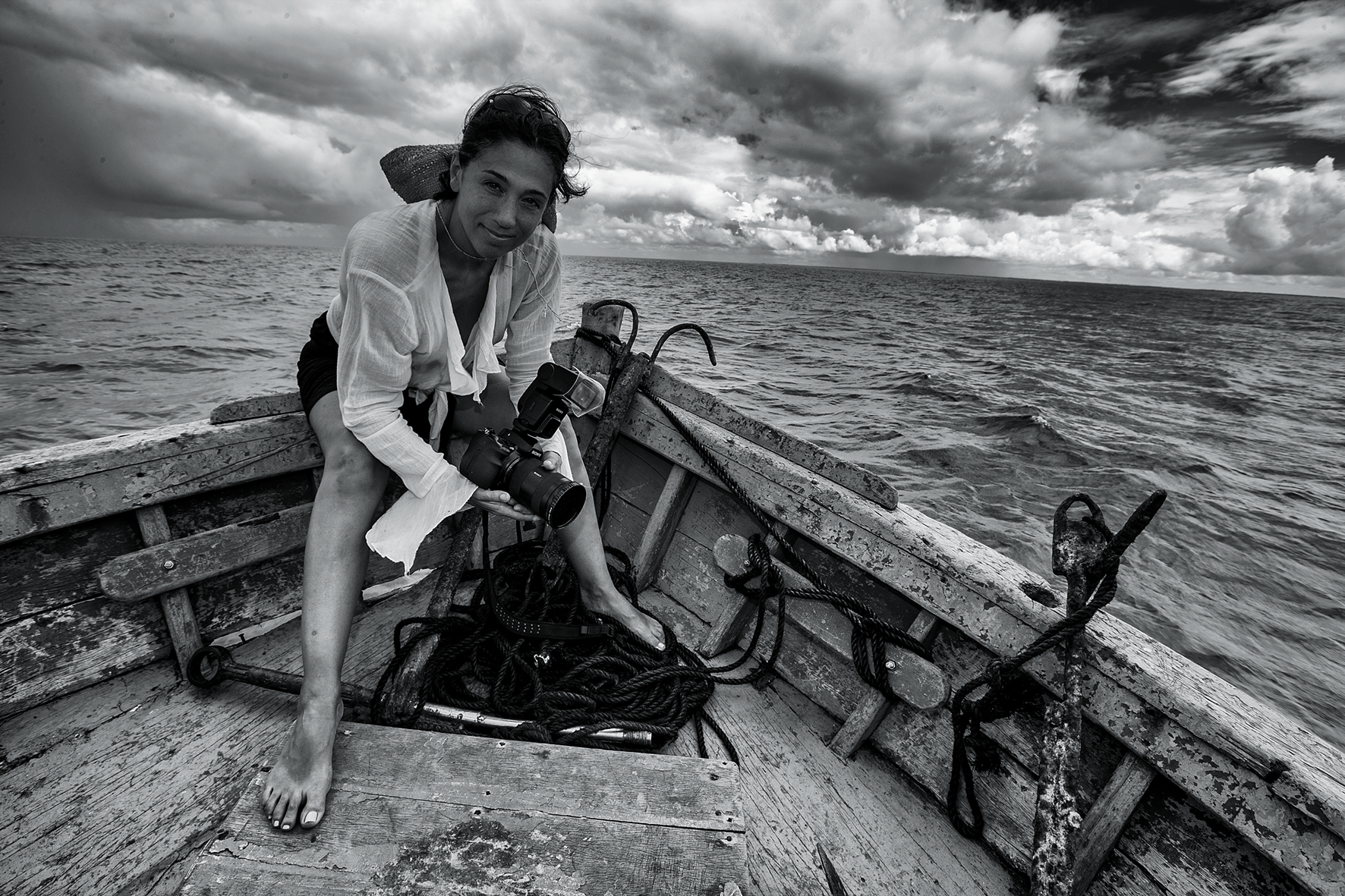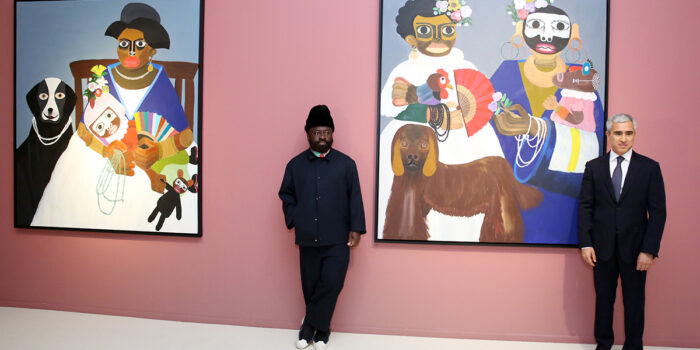Award-winning photographer Cristina Mittermeier seeks to go beyond merely raising awareness. Sophie Breitsameter speaks to her about the lessons she has learnt and life-changing moments behind the lens
When it comes to conservation, Cristina Mittermeier is beyond merely raising awareness. In her words, “in the absence of a pivotal change in our moral compass around nature, we simply cannot succeed against the powers of greed and profiteering that are driving natural resources to dangerous depletion.”
This was the reason she co-founded non-profit organization SeaLegacy, of which she is president, along with fellow photographer Paul Nicklen. With a degree in biochemical engineering in marine sciences, Mittermeir has always been passionate about the world’s oceans and their inhabitants. A contributing photographer and explorer for National Geographic, in 2014, after spending nearly 25 years working to protect wildlife and ecosystems, SeaLegacy was born out of “equal parts frustration and fear”.
The objective of both Mittermeir’s photography and of SeaLegacy is to create “movements and revolutions”, and to turn up the heat on “governments, politicians, corporations and on empowering individuals to be the change they want to see.” While science is important, Mittermeir believes that “it has failed to ‘save the planet’ despite the vast resources that have been invested in scientific research over the past 50 years.”
Earlier this year, Cristina released Amaze, a book which takes readers on a journey (or through a maze, as it were), of two decades’ worth of stunning photography promoting sustainability. The journey is a beautiful one, with outstanding images of countless corners of the planet. The book, like SeaLegacy, hopes to balance “a hopeful message and a positive narrative” to allow for people to be part of proactive solutions.
SeaLegacy is working towards creating healthy and abundant oceans through photography, film and storytelling. Tell us about your latest project in the Azores, off Portugal.
It is a mega destination for swimming with whales and whale watching. This means there are many companies operating there and some of them are really ethical and doing a great job of educating tourists. Sadly, others are just a bunch of cowboys chasing and harassing whales. There’s no enforcement. So what we are initiating is a self-enforcement mechanism in partnership with online travel agency Travelocity so that we, SeaLegacy, can recommend who the proper operators are to people.
How would this work?
One of the solutions that we’re exploring is an idea of turning fisherman into tour operators based on local charismatic animals; whale sharks in Mexico, bull sharks in Isla Mujeres or sperm whales in Dominica. We are there to learn about how it’s properly done. In relation to the Azores in particular, one surprise has been that Portugal doesn’t really do much in terms of plastic pollution. We saw lots of trash coming from land. Such a simple thing. When you proclaim to be a tourist destination it would be good to have better practices in place. It’s the locals that see no problem with throwing trash because it ‘disappears’: it goes into the ocean.

“I was ill the day I made this photograph, so I sought shelter in a hut from Madagascar Spiny Desert’s relentless sun. There, I share the tight space with this beautiful Antandroy woman, who was wearing a traditional mask made of powdered bark, which women use as a natural sunblock and mosquito repellent. We say together quietly in the smoldering heat, and I felt really grateful for her humble hospitality.” – Cristina Mittermeier
Your new book, Amaze, captures some of the most endangered animals, remote communities, and extreme corners of the earth. Is there a particular image in the book that is important to you?
I have many, but by far, my favorite is the Lady with the Goose (below). She always makes me smile and reminds me that the best part of life comes from the simple things: our friends, be they people or pets, and that beauty is not defined by magazines and marketing, but by the mark we leave on this planet. I am grateful for the chance to be amazed by the beauty of planet Earth, every day.
One of the defining aspects of your work is the decision never to hesitate to press the shutter and make images that matter. Why is this important?
Training to be a photojournalist is a process. Step one for me was recognizing that you need to have a special courage to take the images that are difficult. You also need to be willing to be a little badass and fearless and you’ll also need to be a little pushy. If you want to be a journalist, you cannot be a bystander waiting for things to happen, or people to invite you. You have to find your way in, and that’s not always something that people are comfortable doing. Without being rude or without being a jerk you have to get yourself to the place that you need to be, and sometimes that makes other people uncomfortable.
As I’ve grown older, I hesitate so much less now. I speak up when I see people who are not aware or who are doing things that are harmful. I am very opinionated at other people’s dinners. I’m very opinionated in how people dispose of their cigarettes or trash if I see somebody on the street doing it. I’m not always a welcome dinner guest!
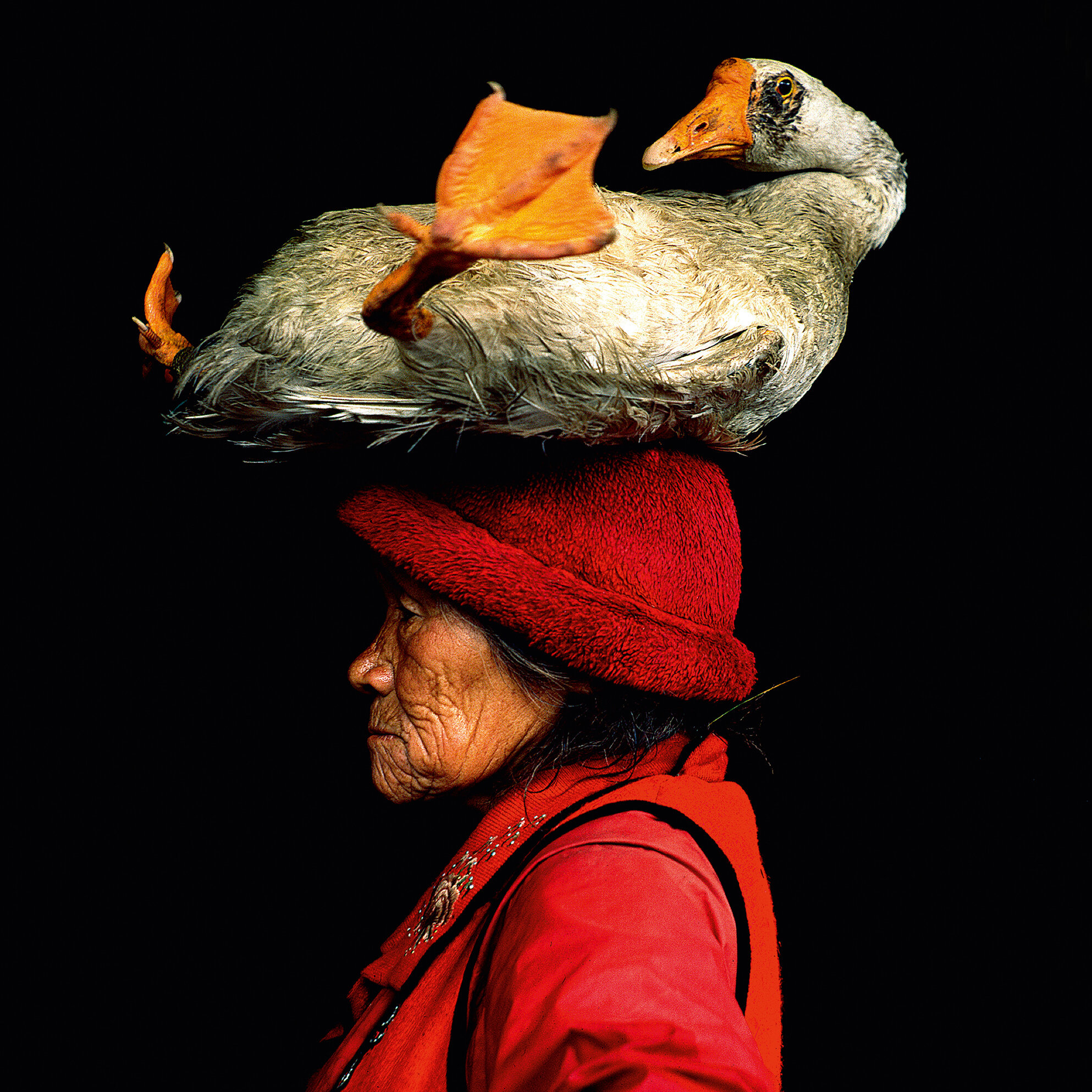
A lady carrying a goose as a pet on her head, Yunnan Province, China. “Whim and humor are two of the qualities I look for in an image. I photographed the List woman – one of the Tibetan minorities in China – as she took her pet goose for a walk in a street market. The image, made with an old single-reflex Yashica camera, always made me smile.” – Cristina Mittermeier
The places you photograph are so diverse – what were some particularly interesting discoveries for you, as an adventurer?
I think any time you travel to a place where there are limitations of infrastructure, it can be challenging. Issues can include equipment that’s being exposed to the elements, or maybe a lack of proper powering systems. Sometimes you are working with the generator that’s spiking, which means it’s cooking your computers and cameras. Just being in a remote place means things can go wrong, basically. I think the most difficult one for me, however, is situations where there are crowds of people behaving unpredictably, such as when you find yourself in a revolution of some kind. Twice in Madagascar we have been the last group of people to leave the country before there’s a coup d’etat. As we were driving to the airport, I could see the barricades going up behind us because that’s it. nobody else is coming in or out. That’s scary.
You capture some wonderful moments from everyday life – fishermen, women washing laundry – activities that unite us, no matter where we come from. Tell us about a standout experience…
It’s a different experience to just be somewhere to document and try to disappear into the background so that people forget about you and go about their business, to being called upon to be part of the fabric of a household. When I had an opportunity to spend three weeks with the Gitga’at people in their fishing camp in The Great Bear Rainforest in British Columbia, the matriarch called me on it and said, “You’re not just going to be taking pictures. Grab a broom. If you’re staying here, you have to help.” I did dishes. I helped cook. It gives you even better access than if you’re just there with your little camera.
Was there any particular lesson about living with the environment that some of these communities revealed to you that you’d like to share?
I think that in modern society we are being indoctrinated to sanitize our lives to the extent that nature is seen as dirty and unsanitary. The biggest lessons always come from people who are not afraid to be in their environment. They’re not afraid to be a little dirty or to be a little cold. They’re much more in tune. For example, when you spend time with Inuit people, they’re not afraid of the cold. They’re perfectly dressed for the elements. A lot of the discomfort we have comes from fear and it’s just psychological. The more you look around and see how the local people behave, how they dress how they carry themselves, the more comfortable you will feel.
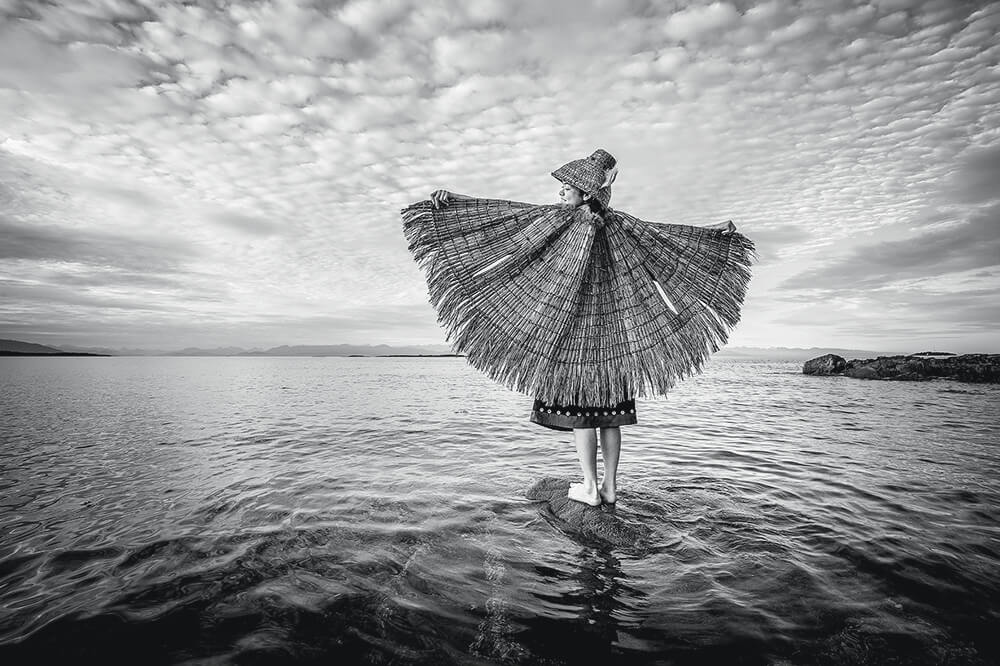
“Ta’Kaiya Blaney, a singer, song-writer, drummer, and advocate for her people, the Tla’amin First Nation of British Columbia, is culturally connected to the power of the Salish Sea” – Cristina Mittermeier
Ultimately, what do you hope the book will achieve?
I hope that in reading the stories in this book readers will see how people create a sacred ecology: that is, their own personal relationship with nature, how they use their creativity to express themselves and put our lives in perspective into the bigger universe that we live in. These people can teach us so much about building community, belonging to community, and being generous and compassionate.
And how can we get involved with SeaLegacy?
Last year, we launched The Tide, our online community. People were always asking us how they could get involved, how they could be a part of SeaLegacy. I believe that money is like water. It flows through our lives in interesting ways: sometimes it feels like a torrent and sometimes it is just a trickle. Whatever it is, the important thing is how we direct the flow. By aligning the way we spend and give money with our highest aspirations and most lofty values, we achieve ‘enoughness’. We wanted to share that opportunity with our followers.
So how does it work?
By subscribing to The Tide (which requires a modest monthly donation of whatever amount fits a particular budget), people become part of an engaged, active community that has access to exclusive expedition footage and other SeaLegacy events. We’ve been thrilled with the response, and we know that in order to turn the tide, we must grow The Tide community. We use the funds to support our expeditions, campaigns and solutions. Being part of The Tide allows people to be part of conservation success, and that feels really good!
And what activities does The Tide go towards supporting?
Our five-year goal is to become an organization of 100 people, working globally on campaigns to call attention to climate change solutions, reform fisheries, empower coastal communities (and especially women) and protect endangered wildlife. We will have a boat that can carry our team anywhere in the world so that we can live-stream on the state of our oceans to the world. In five years, we will have won pivotal campaigns to create new marine protected areas, and we will have succeeded in banning some of the most destructive fisheries on the planet. Our work will be far from done, but we will be better poised than ever to create meaningful and lasting change for our oceans.
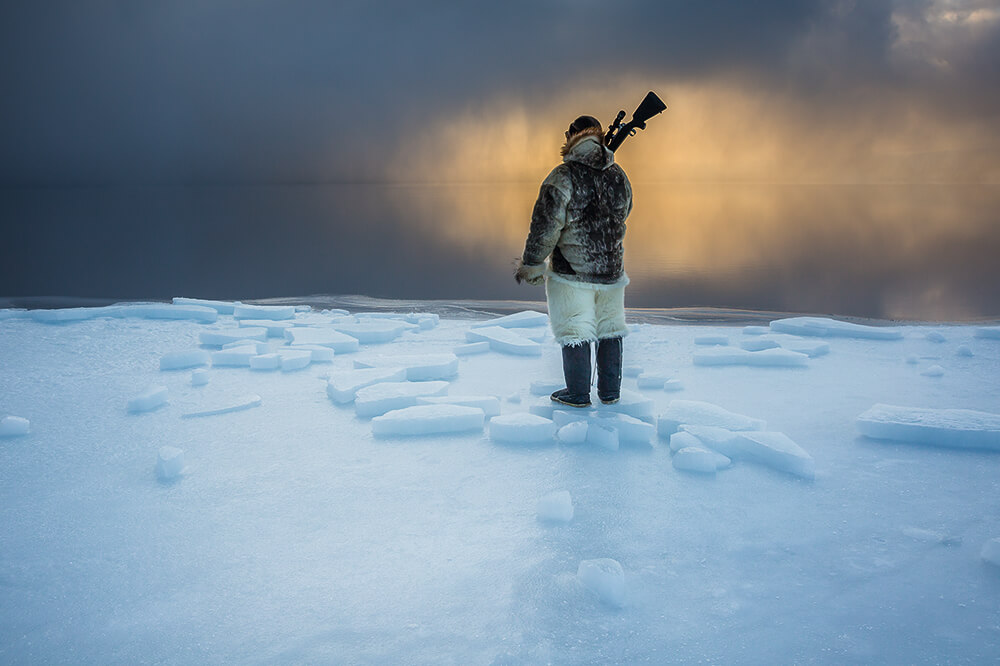
“This image is a study in patience at the edge of the sea. I waited on the ice as the Arctic sun dipped below the horizon, and the molten gold of sunset saturated the twilight. Knowing that his dogs and his village depend on his aim, Naimanngitsoq Kristiansen, a traditional Inuit hunter, also kept his patient watch, waiting for harp seals or walrus to come near.” – Cristina Mittermeier
Amaze by Cristina Mittermeier, published by teNeues, £65, www.teneues.com
Photography courtesy of Cristina Mittermeier
For information about SeaLegacy and for works available as Fine Art, contact: zoe@sealegacy.org
Like this? Then you’ll love: Photographer Paul Nicklen on his love affair with the arctic landscape | The iconic nature photography of David Yarrow
